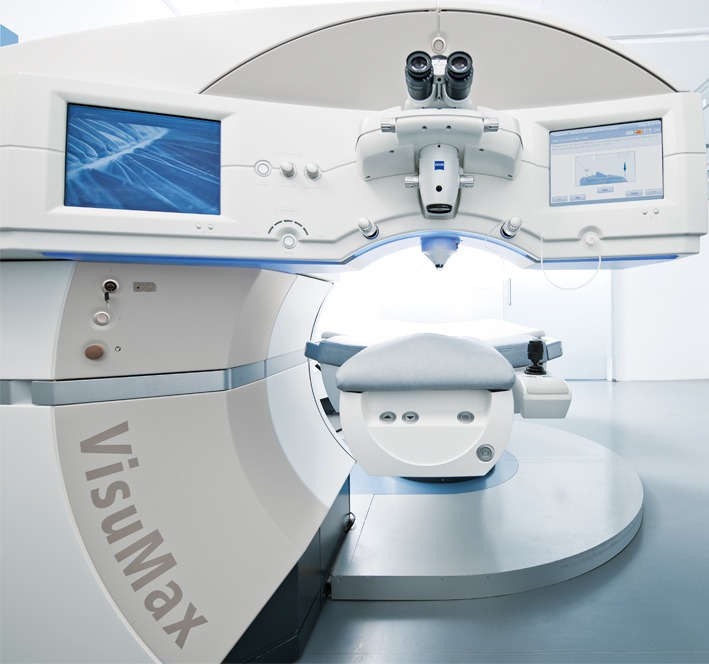
After performing over 50,000 refractive surgeries, including LASIK and its refractive variations Epi-LASIK/PRK, Visian ICL, Kamra Inlay, and SMILE LASIK, I’ve learned that each technique has its unique role in treating specific vision problems. On this page, I describe the SMILE LASIK procedure, and its distinct advantages and limitations compared to LASIK/Epi-LASIK. As the Bay Area’s #1 user of the Visumax femtosecond laser, I’ve been using the VisuMax for 100% of my SMILE LASIK procedures, and the 80% of my LASIK procedures since 2016. The SMILE LASIK procedure represents “another tool in our toolbox” for helping our patients achieve a lens-free lifestyle.
SMILE is an FDA-approved laser vision correction procedure to treat pure nearsightedness with up to 3 diopters of astigmatism. The VisuMax laser is the only femtosecond laser that is approved for the SMILE procedure, which is a minimally-invasive, bladeless, painless, flapless, single-step laser procedure to treat nearsightedness. But for patients with farsightedness or over 3 diopters of astigmatism, LASIK and Epi-LASIK/PRK are more effective options than SMILE. During your consultation, I will be able to determine the best refractive option for you.
Prior to the procedure, numbing eye drops are instilled and an oral sedation pill is offered to minimize anxiety. Similar to LASIK, the SMILE procedure takes about 15 minutes to complete for both eyes. Fortunately, patients typically “feel nothing” during the SMILE procedure, but eyes may feel scratchy and irritated for a few hours after SMILE. Patients can expect to have “functional vision” and return to work the next day, but it can take a few days before vision seems “very clear”. Afterward, antibiotics, anti-inflammatory and lubrication eye drops are used to promote rapid healing.
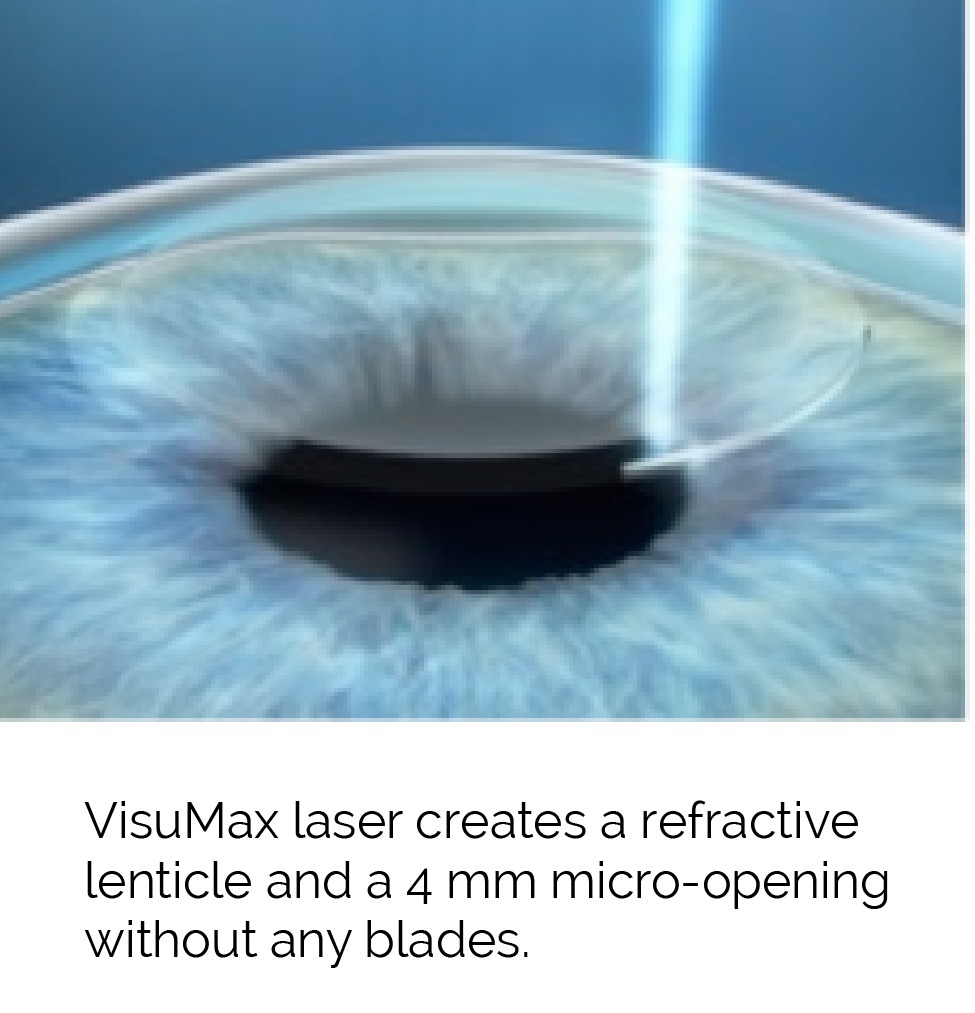
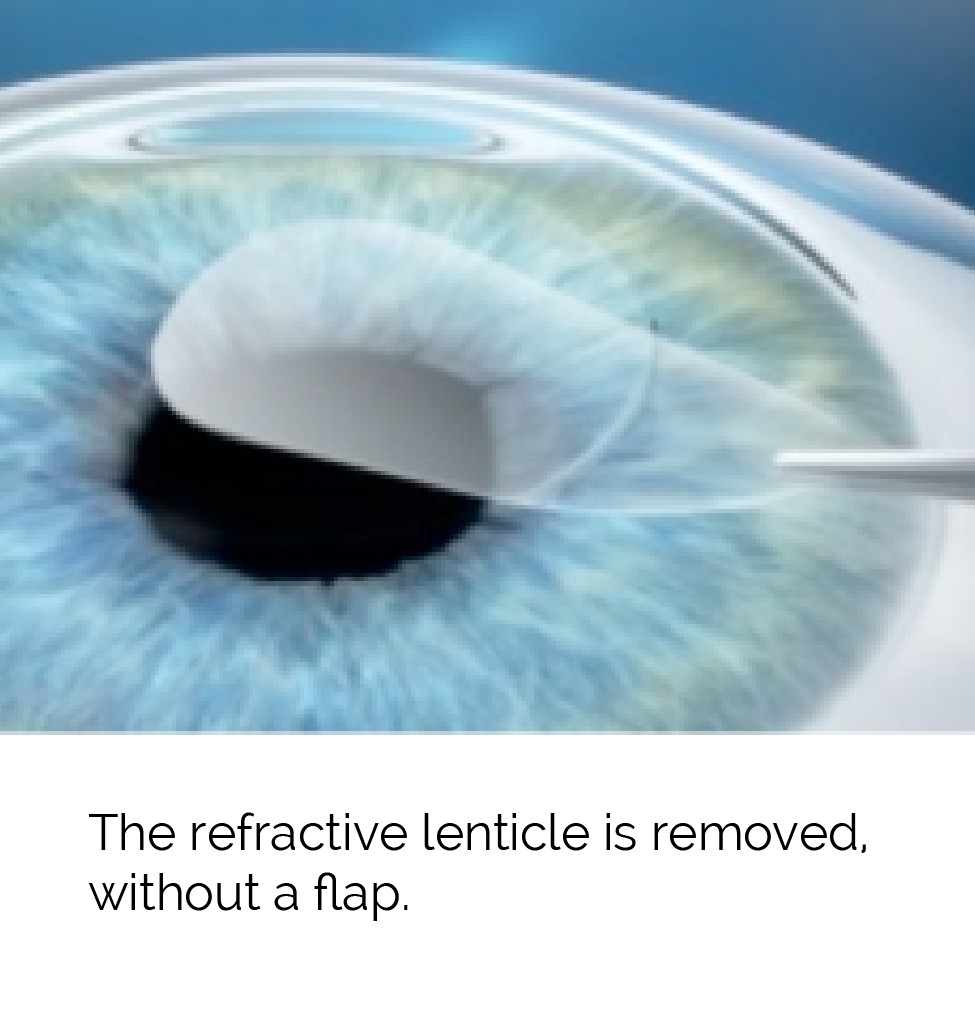
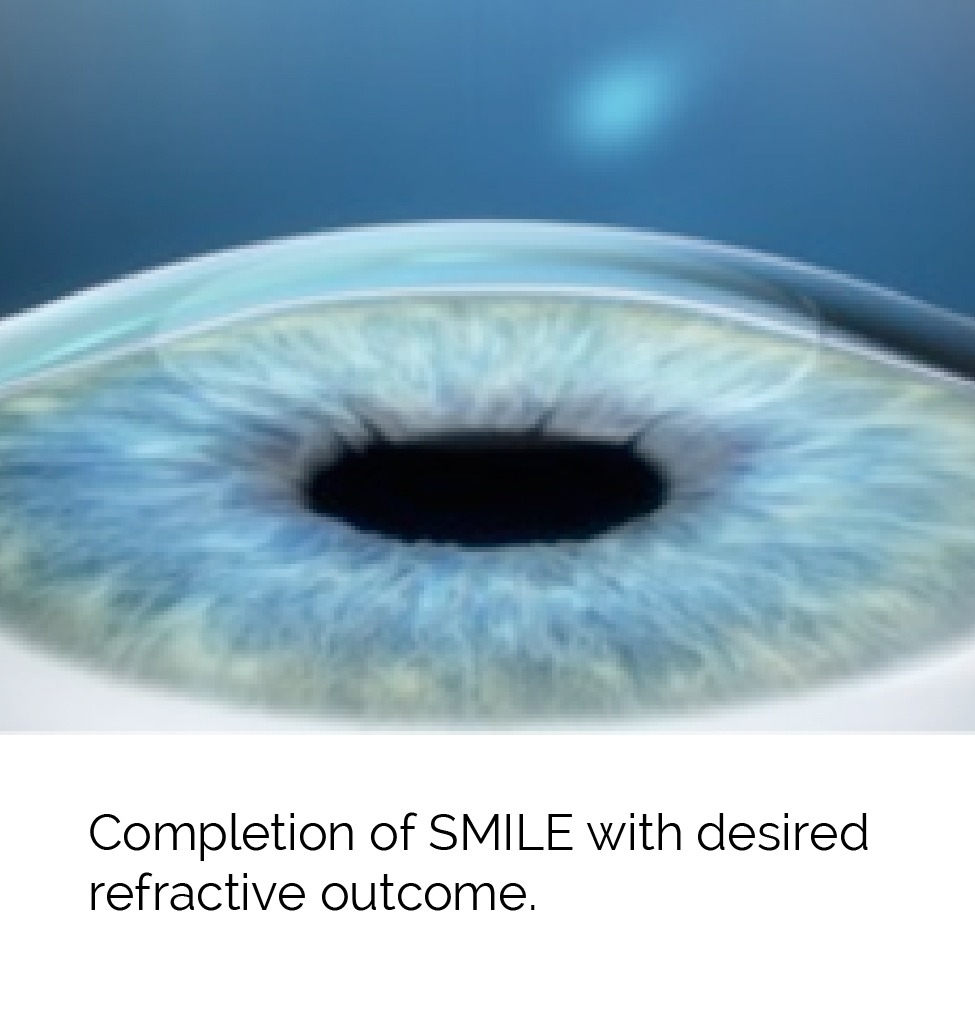
For SMILE, I use the same femtosecond laser that I typically use for LASIK (the VisuMax femtosecond laser), but with a few distinct differences. During the SMILE procedure, the VisuMax laser sculpts a thin lens-shaped “refractive lenticle” that corresponds to one’s optical correction (red area seen below). Simultaneously, the VisuMax laser creates a 4-millimeter micro-opening so the refractive lenticle can be removed. For patients with a larger amount of nearsightedness, the refractive lenticle will be thicker compared to a mild correction. Unlike LASIK, the SMILE procedure does not use a wavefront excimer laser, just the VisuMax femtosecond laser. SMILE is an abbreviation for “SMall Incision Lenticule Extraction and it is analogous to “slipping out a contact lens-shaped lenticle from the cornea”.
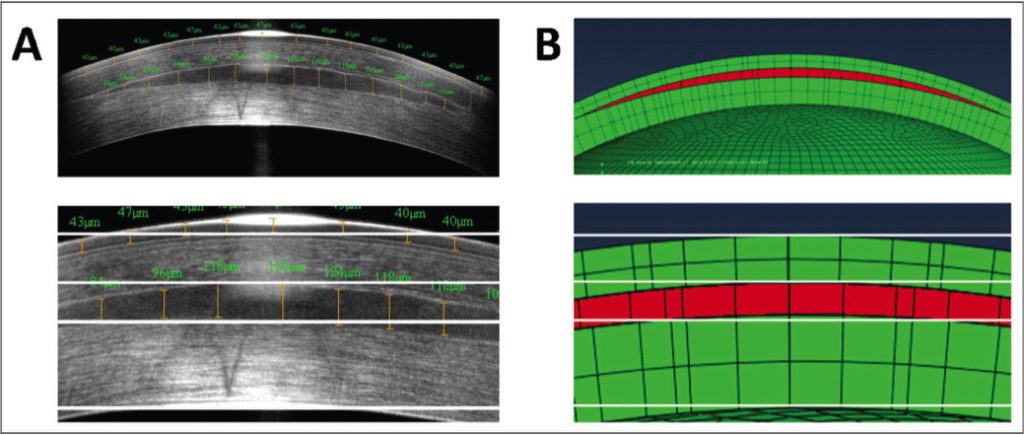
In a retrospective analysis consisting of 200,000 patients that were interested in having a laser vision correction procedure between 2015-2017, approximately 85% of patients were within the FDA-approved treatment range for SMILE. The remainder of patients were either too nearsighted (>-10.0 D), had farsightedness, or had over 3.0 D astigmatism. Conversely, about 93% of patients are within the FDA approved treatment range for LASIK/Epi-LASIK, which includes -12.0 diopters nearsightedness, +6.0 diopters of farsightedness, and 6.0 diopters of astigmatism.
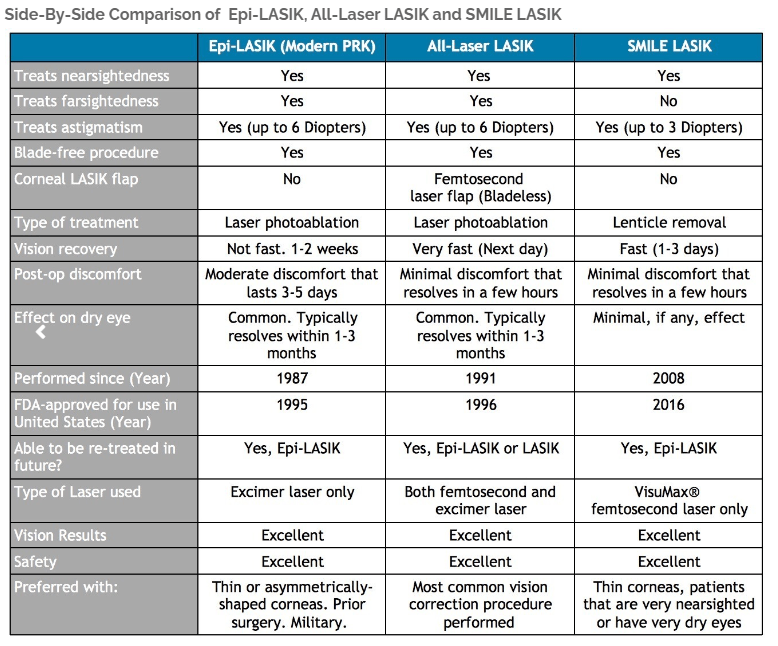
When making apples-to-apples comparisons, clinical studies have shown that patient satisfaction, final visual results and safety are quite similar between modern LASIK, Epi-LASIK and SMILE.
606 Saratoga Ave,
San Jose, CA 95129
5790 Stoneridge Mall Rd, Pleasanton, CA 94588